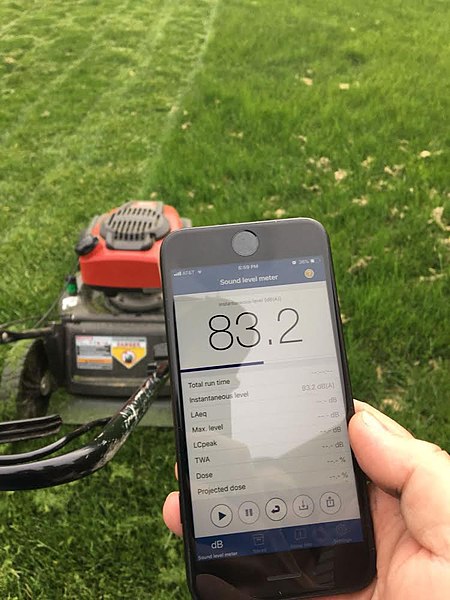It’s summertime again and, for many, that means grilling outdoors, vacation-venturing to places near and far, and, with lawns and gardens now waking from their colder-temperature-induced dormancies, respectively, associated lawn-and-garden-care chores.
On that last note and here in America with the average price for gasoline nationwide now hitting $5 per gallon, with regard to maintaining the yard, if you were previously sitting on the fence debating whether or not to go electric, this may now be the time to do just that.
Me, myself, I made the switch years ago and am really glad I did.
Being a huge clean-air advocate, I knew zero-emissions lawn-mowing was the right move for me.
For me, the choice was easy. I took part in a lawnmower exchange program arranged through the local air pollution control district in partnership with an area scrap yard and participating electric lawnmower and associated appliance manufacturer.
The beauty of this whole arrangement was that I got to exchange my at-that-time, far-less-than-optimum-running, gasoline-powered mower, got a new “clean” rechargeable electric grass-cutting machine in its place, earned credit for the, so-to-speak, “traded-in” internal-combustion-engined (ICE) model (to apply toward the zero-emissions mower), all with basically little out-of-pocket expense incurred and, while at the same time, knowing fully well that, in making the switch and subsequently using the new device, air quality would be helped.
It wasn’t just that. Turning over my ICE-powered mower meant that there would be no more trips to the closest gas station to refill an empty gasoline storage container, costs associated with that and with related corresponding maintenance, these would simply disappear. Additionally, operating costs would also be lower – the equivalent costs for battery recharging would likewise be less.
And, no more having to breathe the nasty fumes emanating from the ICE-powered mower’s exhaust.
Whereas with the electric-motor-equipped mower all that is needed is a charged (in my situation the proper +24-volt direct-current (DC)) battery to enable operation, the gas-powered version I owned needed four fundamental components: fuel, lubricating oil, spark plug and an engine with carburetor, carburetor filter and starting or cranking mechanism of some sort. On my mower, the last process was enabled via pull cord.
Then there was the matter of mower maintenance. Periodically, the lubricating oil and spark plug needed replacing and the carburetor air-intake filter as well as the mower’s underside (where grass and other lawn-clippings could collect, build up and become caked on) needed cleaning.
On the other hand, with its comparatively few moving parts, electric-mower maintenance was, if you will, a breeze.
Now, as to the practice of mowing itself, if the grass being trimmed was too thick it could make either machine stall out. And, the effect of the stall could be completely disabling to the device itself depending on mower type selected for use.
In the case of the ICE-powered appliance, the carburetor could become flooded such that after repeated attempts at restarting, it might not, necessitating sufficient time for the problematic condition to clear; in some cases this could be as long as 10 to 15 minutes or longer, depending. If such a stall were to occur on the zero-emissions apparatus, this caused an on-device circuit breaker to trip. If that happened, the remedy was to reset the breaker and, as long as there was not an overload condition present and as long as the battery had sufficient charge (and there wasn’t some additional electrical and/or mechanical issue with the machine) the mower would restart.
That all said, bottom line is that both lawnmowers did the job of that they were designed to do, that is, cut the grass. Both had rear-mounted grass and yard-clippings catch bags. And, each produced a fair amount of engine hum, buzz: noise, in other words. This as well as their being equipped with built-in safety mechanisms to stop the mowing action should an unsafe operating condition present itself.
All else being equal, in a side-by-side comparison, for my money, the electric, zero-emissions lawnmower, quite honestly, leaves the gasoline-powered model I once owned, if you’ll pardon the pun, in the dust!
– Alan Kandel
Copyrighted material.

I’ve seen them in action, and I am impressed by their and efficiency. I’ve never worked one, but from what I’ve seen, it appears to be even more powerful than its gas powered predecessor. You got a thumbs up from me with replacing your gas powered for an electric powered lawnmower. Don’t forget to also get its partners, the edger/trimmer, and leaf blower.
As to your leaf-blower recommendation, respectfully, I’ll pass.
I switched from a gas mower with powered wheels to a battery mower without power to the wheels. I thought that it would be much harder to mow some steep parts of my yards, but I found that the new mower was so much lighter that the difficulty was about the same.
As to noise, the battery mower is much quieter that the gas one. No comparison.
The big downside is that here in the Pacific Northwest we have a lot of wet spring weather which really prompts heavy grass growth, so the first mow or two of the year faces thick, tall, wet grass. The mower handles it well, but I have to recharge the battery at least once to mow the whole lawn. Later in the spring and summer this is not a problem.
Battery string trimmers work fine. As for leaf blowers, I hate the sound of them. Even though I have a very big yard with lots of trees, I prefer to rake by hand. But some of the neighbors around me use yard services that have gas blowers. You can hear them from at least a block away. I have watched them, and they will spend a whole minute chasing a single leaf with the blower. It creates bad habits. If I have to use a blower as I get older, it will definitely be battery-powered.